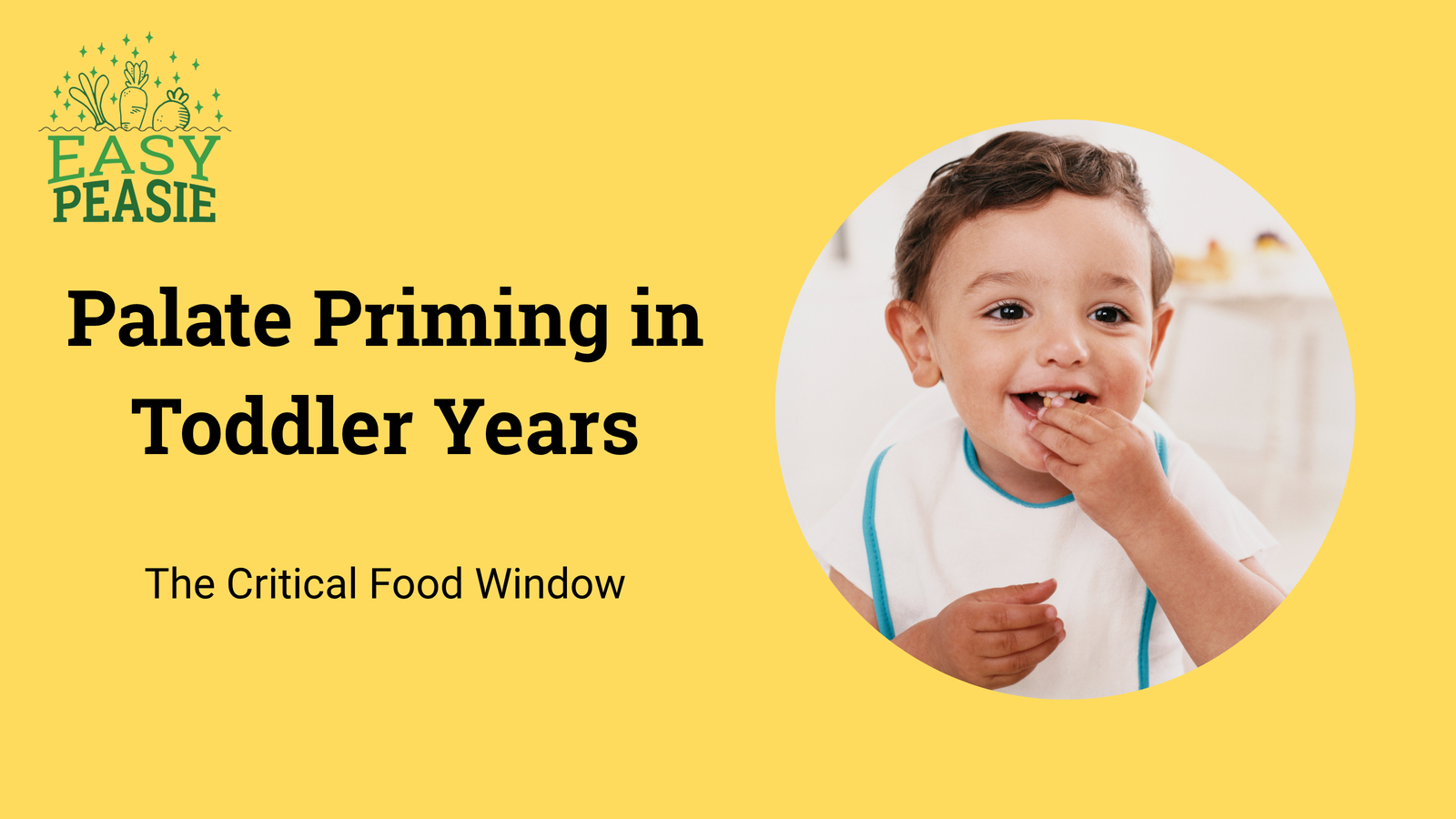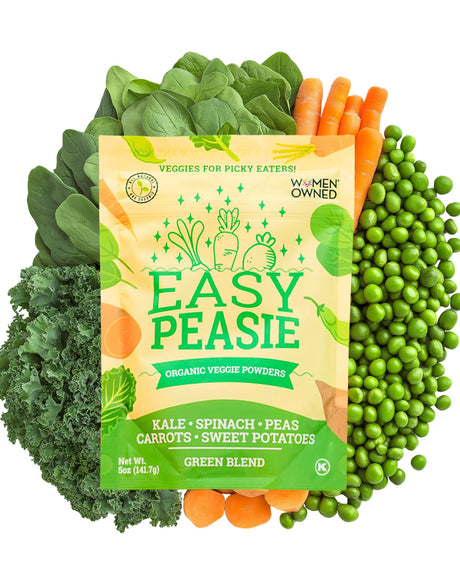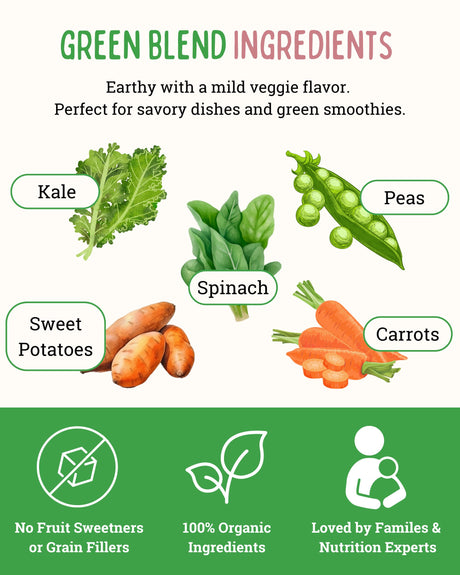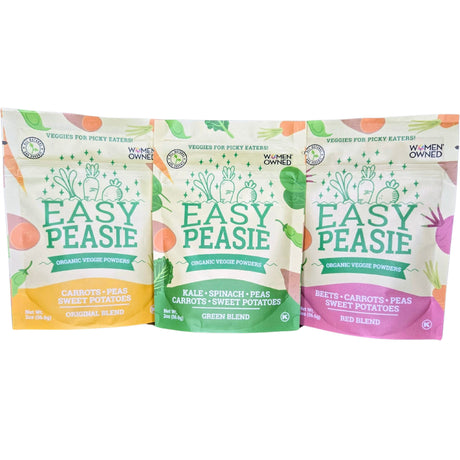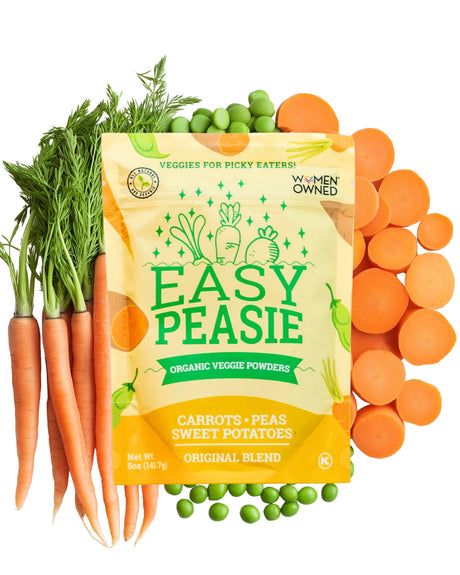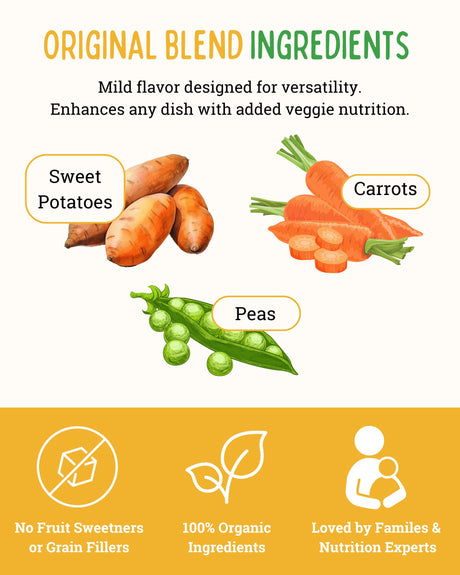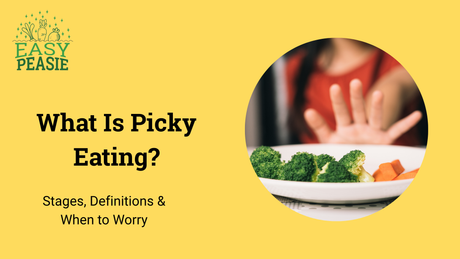Your 18-month-old sits in their high chair, methodically dropping every piece of broccoli onto the floor while happily devouring their crackers. You wonder if you've already missed some magical window where vegetables were supposed to become appealing, and whether your toddler is destined for a lifetime of beige foods.
If this scenario feels familiar, take a deep breath. While the toddler years are indeed a critical period for developing food preferences, it's not an all-or-nothing situation. Understanding how palate development works during these early years can help you make strategic choices that set your child up for better food acceptance both now and in the future.
The science behind early food acceptance reveals that what happens during the toddler years significantly impacts lifelong eating patterns. But here's the encouraging news: even if your toddler seems to reject everything healthy, there are research-backed strategies that can help prime their palate for eventual acceptance of a wider variety of foods.
Understanding Palate Development in Toddlers
The Science of Taste Preference Formation
Your toddler's palate isn't just being picky to frustrate you – there's fascinating science behind how taste preferences develop. During the first few years of life, children's taste buds and food preferences are remarkably plastic, meaning they can be influenced and shaped more easily than at any other time in their lives.
Research shows that taste preferences formed during toddlerhood often persist into adulthood. Children who are exposed to a variety of flavors early on are more likely to accept diverse foods later in life. Conversely, limited early exposure can lead to more restricted eating patterns that become increasingly difficult to change as children get older.
Key Developmental Factors:
- Taste buds are most receptive to new flavors between 12-24 months
- Neophobia (fear of new foods) naturally increases around 18-24 months
- Repeated exposure during this window has the strongest impact on long-term acceptance
- Early flavor memories can influence preferences for decades
The Critical Window: Why Timing Matters
The toddler years represent a unique opportunity because children's neurological and digestive systems are still developing. Their taste receptors are more sensitive, their food memories are being formed, and their eating patterns aren't yet completely established.
During this period, even small, consistent exposures to new flavors can create lasting positive associations. This is why feeding experts emphasize that what you do during the toddler years matters significantly more than what you do later when trying to expand a child's palate.
What Makes This Window Critical:
- Brain plasticity is at its peak for forming food memories
- Digestive systems are adapting to solid foods
- Social eating patterns are being established
- Texture acceptance windows are most open
- Flavor compound recognition is developing
Beyond Just Taste: The Multi-Sensory Experience
Palate development isn't just about taste – it involves all the senses. Toddlers are learning to process the sight, smell, texture, sound, and even temperature of foods. Each positive or negative sensory experience contributes to their overall food acceptance patterns.
This multi-sensory aspect explains why simply hiding vegetables in familiar foods, while nutritionally beneficial, isn't enough for complete palate development. Children also need opportunities to experience foods in their whole form to develop comfort with various textures, colors, and smells.
Early Intervention Strategies That Work
The Power of Repeated Exposure
The most important strategy for palate priming is consistent, pressure-free exposure. Research consistently shows that it can take 10-15 exposures to a new food before a child will even try it, and even more exposures before they develop a preference for it.
This doesn't mean forcing your toddler to eat foods they reject. Instead, it means regularly including small portions of various foods on their plate without any expectation that they'll eat them. Each time they see, smell, or even just touch a food, it counts as an exposure that's building familiarity.
Effective Exposure Strategies:
- Include tiny portions of new foods alongside accepted favorites
- Let toddlers see you enjoying the foods you want them to try
- Read books about foods and visit farmers markets for visual exposure
- Allow safe food play and exploration without eating pressure
- Maintain consistent presence of foods even after initial rejections
Strategic Flavor Bridges
One of the most effective early intervention strategies involves using "flavor bridges" – foods or seasonings that help transition toddlers from familiar tastes to new ones. This approach works by gradually introducing new flavor compounds in the context of already-accepted foods.
For example, if your toddler loves sweet potatoes, you might gradually introduce carrots, then butternut squash, building on that familiar sweet, orange vegetable preference. The key is making these transitions slowly and maintaining the comfort of familiar foods while expanding the flavor profile.
Natural Flavor Bridges:
- Sweet vegetables (sweet potatoes → carrots → butternut squash)
- Mild fruits (bananas → pears → apples)
- Familiar seasonings gradually introduced to new foods
- Similar textures with slightly different flavors
- Color families that look familiar but taste slightly different
Veggie Palate Priming with Concentrated Flavors
One innovative approach to early palate priming involves using concentrated vegetable flavors to familiarize toddlers with vegetable taste compounds without the texture challenges that often cause rejection. This strategy allows children to develop positive associations with vegetable flavors before being expected to handle the full sensory experience of whole vegetables.
When vegetable powders are mixed into already-accepted foods, toddlers get regular exposure to the flavor compounds found in vegetables. Over time, this can make them more accepting when those same flavors appear in whole vegetable form.
How Concentrated Flavor Exposure Works:
- Provides consistent vegetable flavor exposure without texture barriers
- Allows positive associations to form with vegetable taste compounds
- Creates familiarity that can transfer to whole vegetables later
- Reduces the intensity of "new food" reactions when whole vegetables are offered
- Builds a foundation of vegetable flavor recognition

The Role of Food Play and Exploration
Encouraging safe food exploration and play is crucial for palate development. Toddlers learn through their senses, and allowing them to touch, smell, and examine foods without eating pressure helps build positive associations.
Food play might look like letting your toddler help wash vegetables, tear lettuce for salad, or simply explore foods with their hands during mealtime. These experiences build familiarity and comfort that often precedes actual eating.
Safe Food Exploration Ideas:
- Washing fruits and vegetables together
- Letting toddlers help with simple food preparation
- Offering foods for touching and smelling without eating expectations
- Creating sensory bins with dried beans, rice, or pasta
- Reading books about foods and cooking together
Modeling and Social Learning
Toddlers are keen observers who learn primarily through imitation. Your own eating behaviors and attitudes toward food significantly impact their developing preferences. Enthusiastic modeling of diverse eating can be one of your most powerful tools for palate development.
This means eating the foods you want your toddler to accept, expressing genuine enjoyment, and maintaining positive attitudes around food exploration. Children who see their caregivers enjoying vegetables are more likely to eventually try them themselves.
Effective Modeling Strategies:
- Eat the same foods you're offering your toddler
- Express genuine enjoyment of healthy foods
- Share meals together when possible
- Talk positively about different foods and flavors
- Avoid expressing your own food dislikes in front of your toddler
Practical Implementation for Busy Families
Creating a Palate-Friendly Meal Environment
The environment in which you offer new foods matters significantly for acceptance. Toddlers are more likely to try new foods when they feel safe, relaxed, and free from pressure.
This means avoiding battles over food, not using dessert as a reward for eating vegetables, and maintaining pleasant conversation during meals. The goal is to create positive associations with mealtime that extend to the foods being offered.
Environmental Factors That Help:
- Regular meal and snack times that prevent excessive hunger
- Minimal distractions during eating
- Comfortable seating where toddlers can easily self-feed
- Family-style serving where children can choose their own portions
- Pleasant conversation that isn't focused on what they're eating
Starting Small: The Micro-Dose Approach
When introducing new foods during the critical window, starting with very small amounts reduces overwhelm and increases the likelihood of neutral or positive experiences. A single pea, a small piece of bell pepper, or a tiny taste of a new sauce can be enough to begin building familiarity.
Offer just one or two bites of new foods alongside familiar favorites, use tiny portions that don't feel overwhelming, and focus on exposure rather than consumption.
Meal Planning for Palate Development
Effective palate priming requires consistency, which means incorporating exposure opportunities into your regular meal planning. This doesn't mean creating elaborate meals, but rather thoughtfully including small amounts of various foods in your regular rotation.
Include one "familiar" food and one "exploring" food at each meal, rotate through different color families of fruits and vegetables, and offer the same new food multiple times across different meals.
Making It Sustainable
The most effective palate priming strategies are ones you can maintain consistently over time. This means finding approaches that fit into your family's routine and don't create additional stress around mealtimes.
Start with just one new strategy at a time, use convenience foods strategically to reduce preparation burden, and focus on progress rather than perfection.
Common Challenges and Solutions
When Toddlers Reject Everything New
It's completely normal for toddlers to go through phases where they seem to reject every new food offered. This often coincides with the natural development of food neophobia around 18-24 months.
During these challenging phases, continue offering variety without expectation of acceptance, use accepted foods as vehicles for new flavors, and remember that seeing and smelling foods still counts as beneficial exposure.
Dealing with Texture Sensitivities
Many toddlers who struggle with food acceptance have underlying sensory sensitivities that make certain textures particularly challenging. Understanding and working with these sensitivities leads to better long-term outcomes.
For texture-sensitive toddlers, start with familiar textures and gradually introduce variation, use blended or pureed versions of foods to introduce flavors first, and provide safe opportunities for texture exploration through play.
Balancing Nutrition During the Priming Process
One of the biggest parental concerns during palate development is ensuring adequate nutrition while children are learning to accept new foods. This is where strategic use of concentrated nutrients can provide peace of mind.
Knowing that your toddler's nutritional needs are being met through their accepted foods plus strategic additions allows you to take a more relaxed approach to new food introduction, which often leads to better acceptance.
Long-Term Benefits of Early Intervention
Setting the Foundation for Lifelong Healthy Eating
The palate priming work you do during the toddler years creates a foundation that can benefit your child throughout their life. Children who experience a variety of flavors early are more likely to accept diverse foods during school years, adolescence, and adulthood.
This early investment in palate development can prevent many of the food battles and nutritional concerns that arise when children reach school age with very limited food acceptance.
Long-Term Benefits Include:
- Greater willingness to try new foods throughout childhood
- Better nutritional status during critical growth periods
- Reduced food-related anxiety for both children and parents
- More positive relationships with food and eating
- Greater flexibility for social eating situations
Building Food Confidence
Early palate priming helps build overall confidence around food and eating. Children who have positive early experiences with food exploration are more likely to approach new eating situations with curiosity rather than anxiety.
Preventing Feeding Difficulties
Early intervention during the critical window can prevent many feeding difficulties from becoming entrenched. Children who receive consistent, positive exposure to a variety of foods during toddlerhood are less likely to develop severe feeding aversions or extremely restrictive eating patterns.
Your Palate Priming Action Plan
Week One: Assessment and Baseline
Start by observing your toddler's current eating patterns without making changes. Note which foods they accept readily, which ones they're curious about, and which ones trigger strong negative reactions.
Week Two: Gentle Introduction
Begin implementing one palate priming strategy consistently. This might be adding tiny portions of new foods to accepted meals, beginning to use concentrated vegetable flavors in familiar foods, or simply increasing the variety of foods your toddler sees you eating.
Week Three: Building Routine
Expand your approach to include consistent exposure opportunities throughout the week. Remember that progress during this critical window is measured in exposures, not necessarily in consumption.
Moving Forward with Confidence
Trust the Process
Palate development during the toddler years is a gradual process that requires patience and consistency. There will be good days and challenging days, but each positive exposure contributes to long-term success.
Remember that your toddler's current food preferences don't determine their lifelong eating patterns. The foundation you're building now through consistent, pressure-free exposure will serve them well throughout their development.
Celebrate Small Wins
Progress in palate development often comes in small increments. Celebrate when your toddler touches a new food, shows interest in what you're eating, or even just allows a new food to stay on their plate without throwing it.
These small steps are building the foundation for bigger changes in food acceptance over time.
Keep the Bigger Picture in Mind
The palate priming work you do during your toddler's critical window is an investment in their long-term health and relationship with food. Even if progress feels slow, you're providing valuable exposures that will benefit them for years to come.
Stay consistent with your approach, maintain positive mealtimes, and trust that the foundation you're building will support your child's expanding palate as they grow and develop.
The toddler years represent a unique opportunity to influence your child's lifelong relationship with food. By understanding how palate development works and implementing research-backed strategies consistently, you're giving your child the best possible foundation for healthy eating throughout their life.
Disclaimer: This article is for educational purposes only and does not constitute medical advice. Always consult with your child's healthcare provider for concerns about eating patterns, growth, or development.

